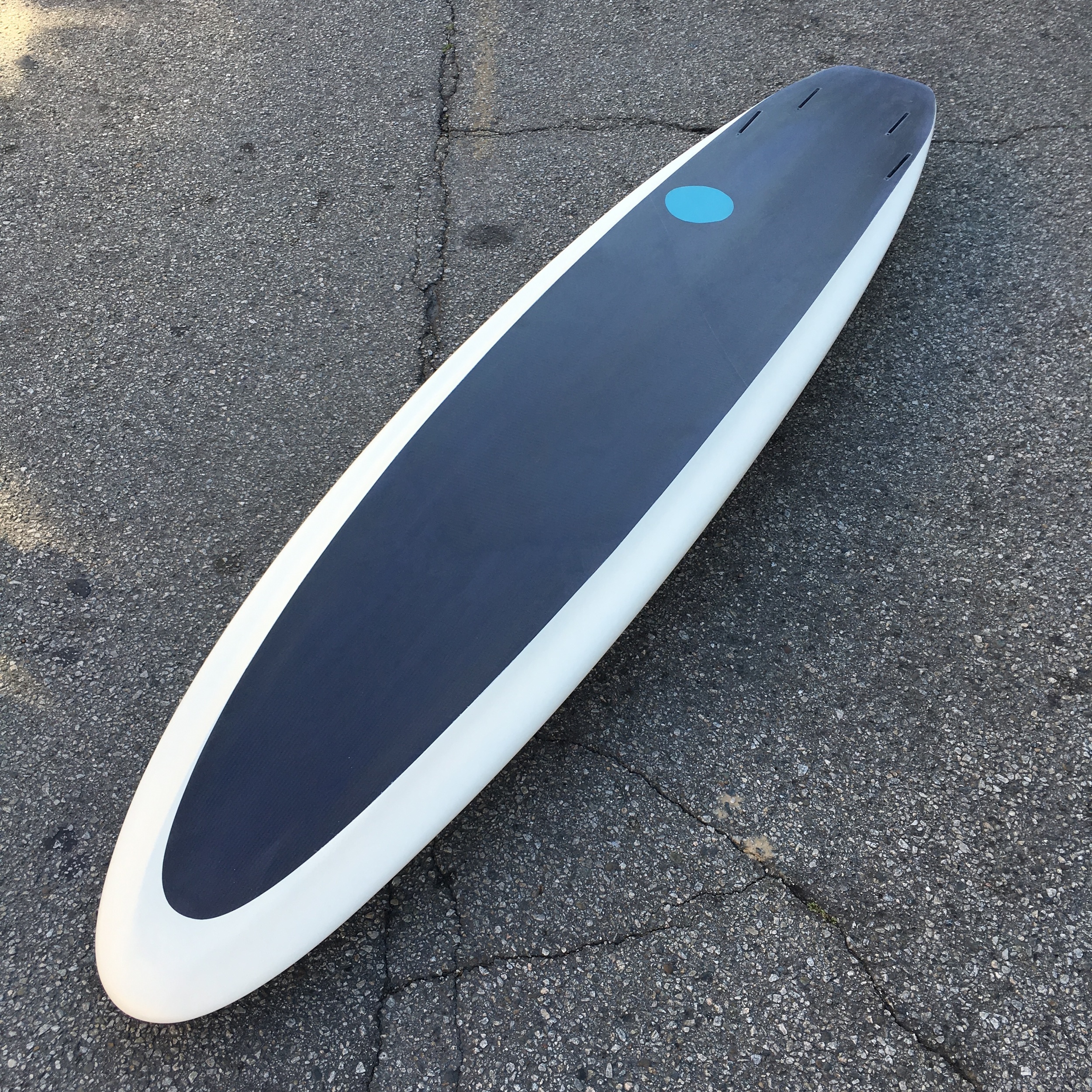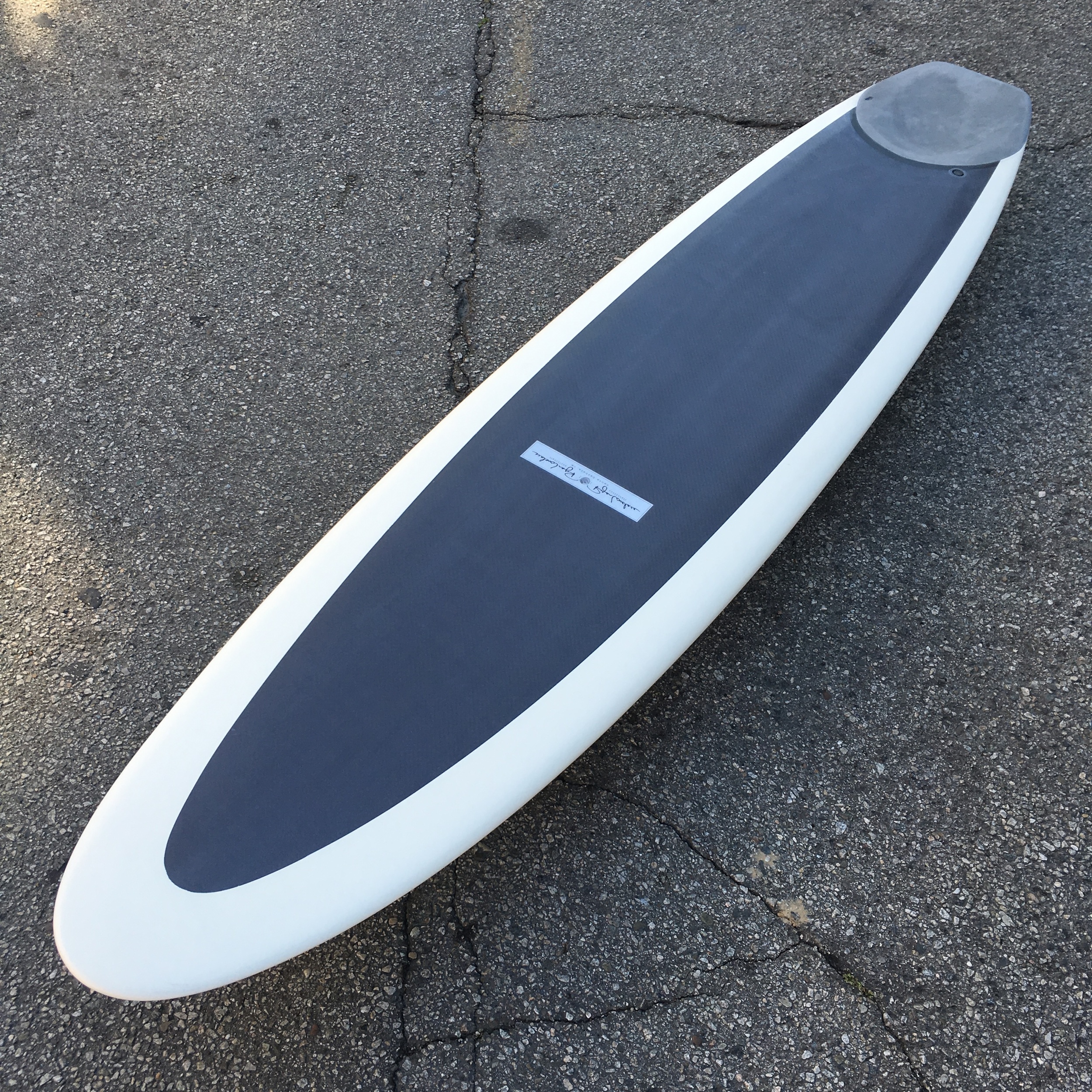By Michael Kew
Camel, pre-session 710 tweakage in Western Australia. Photo: Glen Casey.
"THE DREAM IS TO have a buoyant surfboard flexing like a Greenough spoon. For Greenoughphiles, that’s the Holy Grail. That’s what we want.”
It’s a late Sunday summer night and I’ve got Ryan Lovelace, 700 miles south, on a crackly Skype line, trying to grok his words about the 710 quad, a freak he birthed at the suggestion of George Greenough.
“It came from a fucking spaceship, man,” Lovelace said, referring to Greenough’s Edge concept. “So out there. So many curves morphing and twisting into each other.”
Huh?
Let’s rewind.
In 2014 Dave Rastovich surfed Cloudbreak on two strange Greenough Edge boards. Lensman Nick Liotta was there. His photos formed a September 2015 story in The Surfer’s Journal. That month, one of those boards—a 6’3”—was auctioned in Los Angeles for $7,500. The board’s buyer was Lovelace’s pal.
“George wanted whoever bought it to surf it and call him with feedback,” Lovelace said. “My buddy told him it would pair well with a flex fin I made for him, and George proposed I copy the auctioned board and tinker with the design.”
Amid El Niño glow, Lovelace shaped a 6’3” and an 8’0”. In April, he brought both to Greenough for a brief pow-wow at his Lennox Head home. Also there were Rastovich, Simon Murdoch, Glen Casey, and big-wave ace Geoff “Camel” Goulden.
“Camel and Glen rode my 8’0” and George’s Edge guns right after I left Australia,” Lovelace said. “They said George’s were faster but mine was more surfable. Pretty much what I’d expected.”
The Brisbane-LAX long-haul set a seed. “More like a spark,” Lovelace said. “I needed to take that experience with George and build something from it. About three-quarters of the way through my first board [9’5” x 20” x 3.5”], I stopped. It was too stiff, and there was no working backwards.”
In May, a week before winning the Boardroom shape-off in Del Mar, Lovelace rebooted. “The 7’10” involved an insane amount of fine-tuning. I became numb and hyperfocused, and I had a clearer vision of how to get what I was after. I added and removed carbon patches and layers and simply felt for the finish—when it flexed the way I wanted it to.”
From Boardroom, the board was flown to Brisbane and shown by Casey to Greenough, then driven cross-country to test-pilot Camel.
“Glen (Casey) said George was stoked on my experiment,” Lovelace said. “In April he told me he’d shared the Edge design to ‘throw sand into the transmission of big-wave surfboard design.’ And as we were leaving his house, he reminded us: ‘Nothing ventured, nothing gained.’”
So what’d you venture, Ryan?
“Stringerless EPS foam, epoxy, and lots of carbon. I kept the deck dead-flat and the template 98 percent the same as George’s originals. Widened the tail a bit, relaxed the rocker, and kept the rails fat, with a deep, full Edge bottom. Glassed the deck and rails, then molded the bottom shape, pulled it apart, and took a grinder to the bottom of the board, where I hollowed the foam up to the deck, leaving about an inch of foam. Then I glassed the molded bottom back on.”
What’s that supposed to do?
“The harder you push on it, the deeper the concave gets. You have a variable bottom shape and rocker like George’s original spoon design, but with flotation. As with a spoon, you get the flex torsionally rail-to-rail. Like I said, it’s not 100-percent like a spoon, but you wouldn’t really want a surfboard to flex that much.”
How did you want the 710 to work…?
“Since its bottom is so much deeper and lifts up (instead of the deck doming down), and since the apex of the rails is on the deck—as high as you can get—when you get that board on rail, you’re gaining more hold and engaging more of the board instead of less, like with a normal surfboard’s design. The more you lean it on rail, the more of the board you’re engaging—and holding—because the rail’s apex is so much higher on the board. It’s more like a boat than a surfboard.”
…and does it work?
Back in Australia, despite cracking his shin (not the 710’s fault) after three waves, Camel said this: “Even from my first wave, the board felt Space Age. In the tube, it went real fast in-line. I could feel the water flowing through the rail concaves and the lessened drag. I am quite certain the design is going to go faster than anything and make it through sections considered unmakeable. (This board is) an incredible craft.”
Progress?
Stay tuned.

